ABA Therapy for Autism Behavioral Health Centers
Exploring Comprehensive ABA Therapy Options for Autism
Introduction: Understanding ABA Therapy
Applied Behavior Analysis (ABA) therapy stands as a pivotal treatment approach for autism spectrum disorder (ASD) and related developmental conditions. Rooted in the science of behavior and learning, ABA is designed to enhance beneficial behaviors while minimizing harmful ones, offering a structured yet flexible framework that can be tailored to meet individual needs. As families consider the best path forward for their children, this article provides a comprehensive guide to understanding and evaluating ABA therapy services at behavioral health centers.
Defining ABA Services for Autism
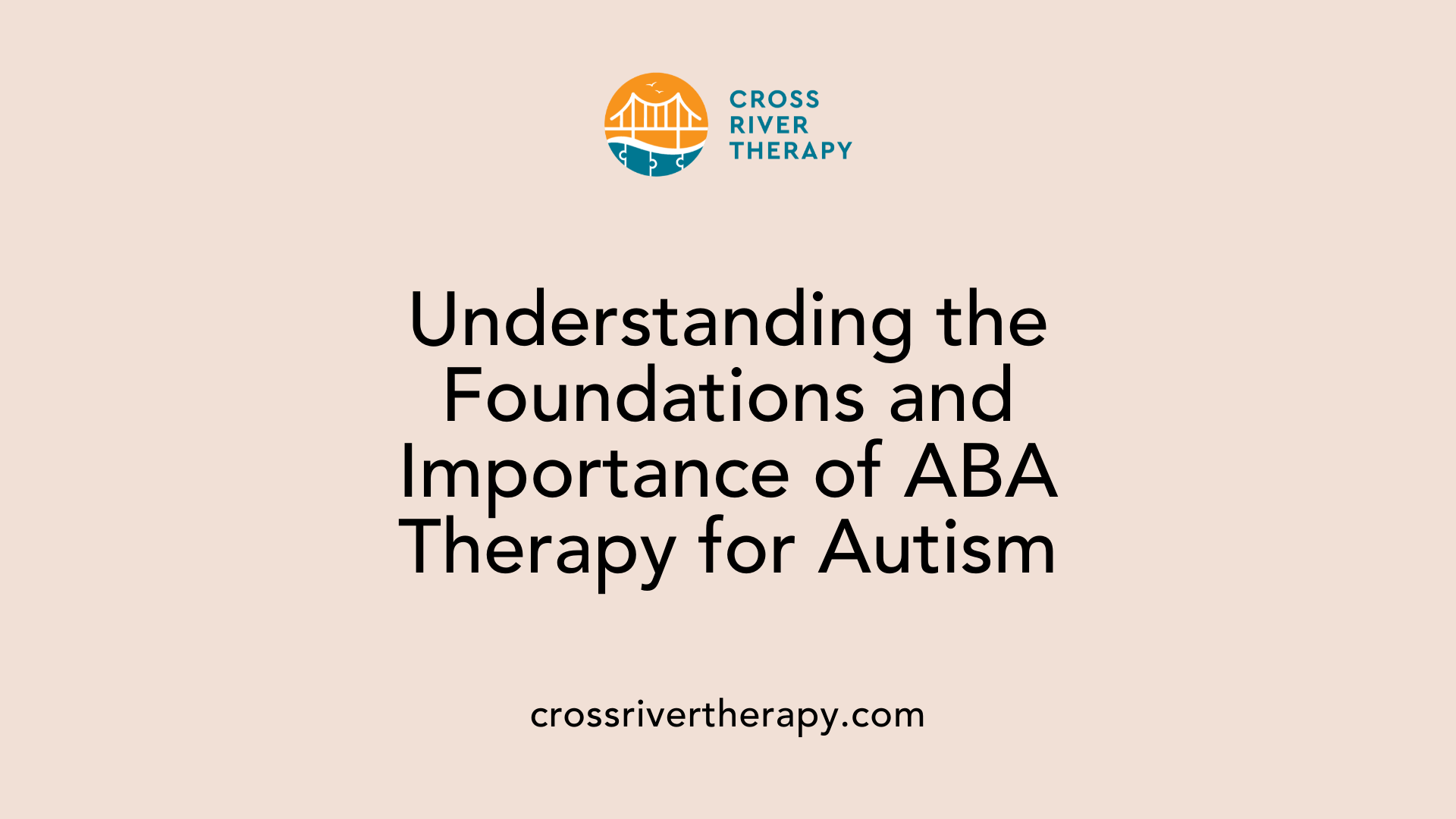
What ABA therapy entails
Applied Behavior Analysis (ABA) is a well-established therapy for children with autism, focusing on enhancing beneficial skills and minimizing harmful behaviors, such as self-injury. It operates on the basic principle that behaviors reinforced through rewards are more likely to recur. ABA therapy promotes various developmental competencies including language, social skills, and academics, while concurrently working to reduce problem behaviors.
History and development of ABA
The roots of ABA trace back to the 1960s, when it was primarily applied to assist children with autism and related developmental disorders. Over the decades, this method has gained recognition for its evidence-based practices, having the endorsement of significant health authorities such as the US Surgeon General and the American Psychological Association. Through rigorous research, ABA's effectiveness has been well-documented, highlighting its adaptability and relevance in modern therapies.
Evolution of ABA techniques
The field of ABA has seen a shift from the traditional, rigid methodologies towards more individualized and engaging approaches. Techniques such as Pivotal Response Treatment and the Early Start Denver Model emphasize natural interactions and play, making therapy not just educational but also enjoyable for children. Furthermore, contemporary practices prioritize collaboration with families and the inclusion of neurodiversity principles, making ABA a comprehensive support system for each child's unique needs.
| Aspects of ABA Therapy | Key Features | Benefits |
|---|---|---|
| Focus Area | Language and communication skills | Improved interaction and social engagement |
| Reinforcement | Rewards for desired behaviors | Encourages recurrence of positive behaviors |
| Adaptability | Tailored to individual needs | Personalization enhances effectiveness |
| Delivery Settings | Homes, schools, and community | Flexibility in therapy delivery |
| Recognition | Evidence-based practice | Supported by scientific research |
Techniques Utilized in ABA Therapy
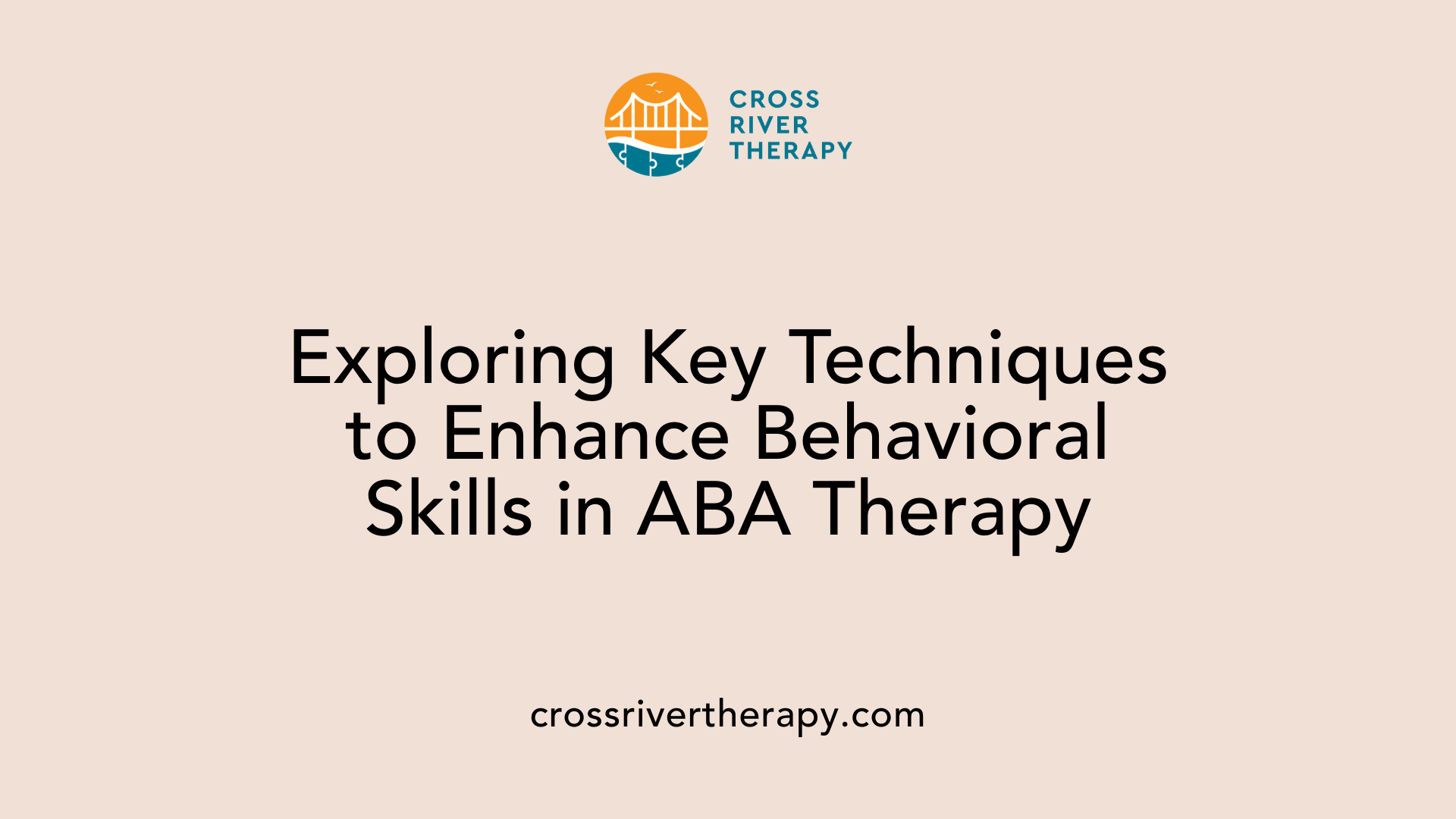
What are the techniques used in ABA therapy?
ABA therapy utilizes a range of evidence-based techniques that specifically aim to enhance behavior in individuals with Autism Spectrum Disorder (ASD). Some of the most prevalent methods include:
- Discrete Trial Training (DTT): This structured approach breaks down skills into smaller, teachable units, allowing for focused instruction and immediate feedback.
- Positive Reinforcement: This involves rewarding positive behaviors to strengthen their frequency. It is integral in encouraging desired actions among clients.
- Modeling: Demonstrating appropriate behaviors for clients to imitate, enhancing their social skills and overall engagement.
- Functional Communication Training (FCT): A technique designed to replace challenging behaviors with effective communication strategies, facilitating more appropriate expressions of needs.
- Prompting: This strategy supports learning through cues or hints that help children acquire new skills, gradually removing these aids as independence grows.
- Fading: In combination with prompting, it involves slowly reducing assistance to encourage self-reliance in skill execution.
- Natural Environment Teaching (NET): This technique encourages practicing learned behaviors in everyday settings, enhancing the transfer of skills to real-life contexts.
How are ABA techniques applied?
The application of ABA techniques is highly structured yet flexible. Qualified behavior analysts (BCBA) conduct thorough assessments of each individual’s needs and create customized treatment plans. Continuous monitoring of progress helps refine strategies as necessary to ensure effective outcomes.
How is ABA tailored to individual needs?
Since each individual with ASD possesses unique challenges and strengths, ABA therapy is adaptable. Techniques are modified based on ongoing evaluations and progress tracking, guaranteeing that interventions are not only suitable but also effective for promoting skill acquisition and reducing undesirable behaviors in diverse environments, including homes, schools, and communities.
ABA Therapy Beyond Autism
Applications of ABA in Other Conditions
While ABA therapy is famously associated with autism spectrum disorder (ASD), its utility extends far beyond this condition. ABA techniques have shown effectiveness in addressing various developmental and behavioral challenges. Conditions such as Attention-Deficit/Hyperactivity Disorder (ADHD), Obsessive-Compulsive Disorder (OCD), Post-Traumatic Stress Disorder (PTSD), and learning disabilities can benefit from the principles of ABA.
Additionally, neurotypical children can experience improvements as well, particularly in classroom settings where ABA techniques enhance behavior management and skill growth. This adaptability emphasizes that ABA is not exclusive to autism; rather, it's a versatile strategy that can promote positive behaviors across diverse populations.
Broader Applicability of ABA Techniques
The structure of ABA therapy enables its application in various scenarios.
- Behavioral Challenges: By implementing structured assessments, personalized goals, and ongoing monitoring, ABA effectively promotes desirable behaviors in a range of individuals.
- Naturalistic Settings: ABA can be delivered in multiple environments, including homes, schools, and community spaces, making it accessible for many.
- Positive Reinforcement: A core element of ABA is positive reinforcement, which is used to encourage the recurrence of desired behaviors, beneficial for children of all needs.
Is ABA therapy only for autism?
While ABA therapy is most commonly associated with autism spectrum disorder (ASD), it is not limited to treating only this condition. ABA techniques can effectively address a variety of developmental and behavioral challenges, including ADHD, OCD, PTSD, and learning disabilities. Furthermore, ABA can be beneficial for neurotypical children, particularly in classroom management and skill development. Insurance coverage for ABA may vary, sometimes requiring an autism diagnosis, but many practitioners apply these techniques to individuals without a formal diagnosis. Ultimately, ABA therapy aims to enhance skills such as communication and social interactions, demonstrating its broader applicability beyond autism alone.
The Benefits of ABA Therapy
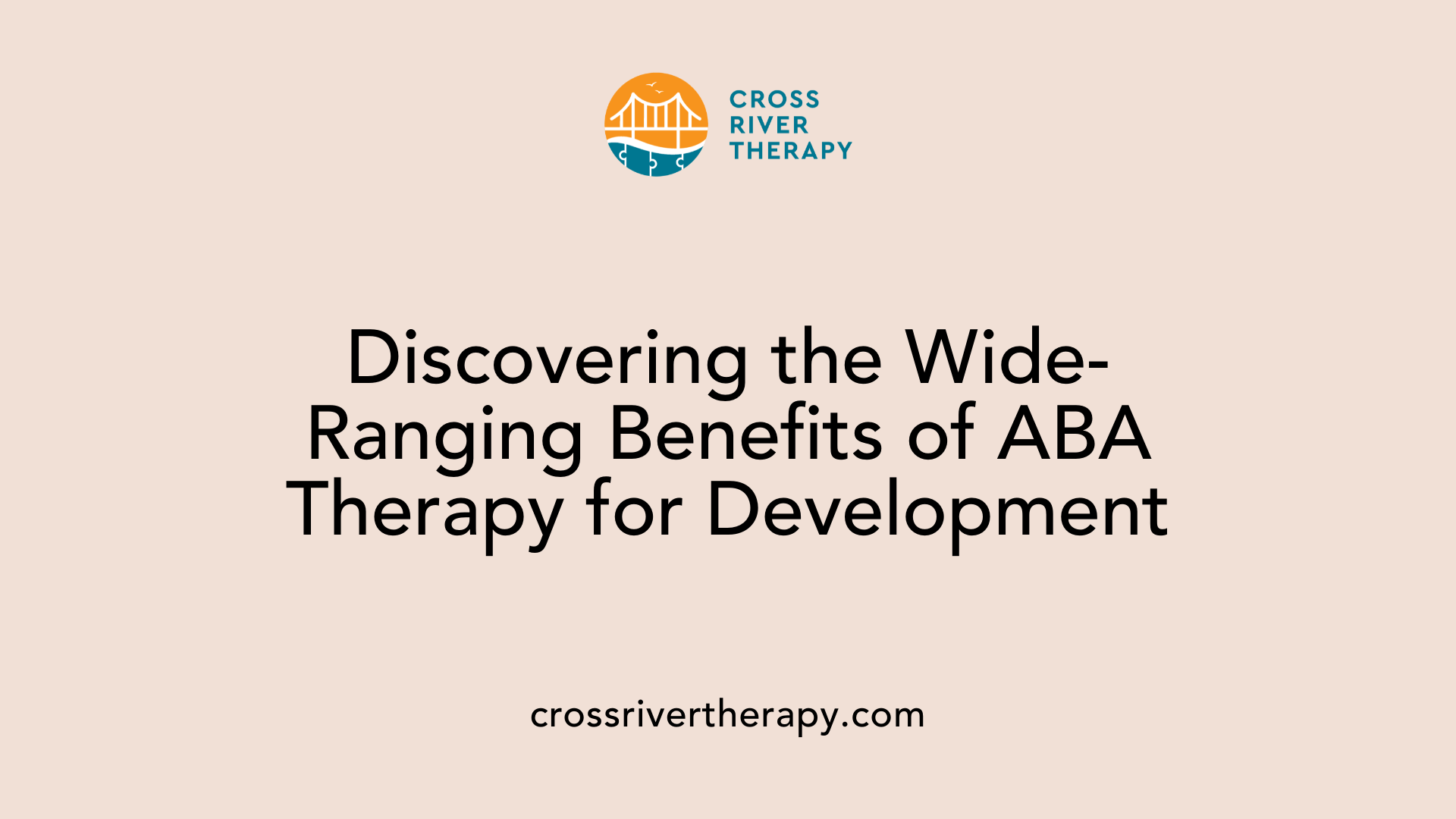
Is ABA therapy effective and what are its benefits?
ABA therapy is regarded as the most effective treatment for autism spectrum disorder (ASD). It employs an evidence-based approach that emphasizes the reinforcement of positive behaviors while decreasing undesirable ones. This method is highly adaptable, tailoring interventions to match the unique strengths and needs of each child.
Types of improvements observed
The implementation of ABA therapy leads to remarkable advancements across various developmental areas, including:
- Language and Communication: Enhanced verbal and non-verbal skills, facilitating better interaction.
- Social Skills: Improvement in social interactions and understanding social cues, which is vital for building relationships.
- Attention and Memory: Increased focus and retention of information, paving the way for academic success.
- Academics: Enhanced learning capabilities, positioning children for better performance in school.
- Reduction of Problematic Behaviors: Decreased frequency of negative behaviors that may hinder development.
Early intervention impact
The early application of ABA therapy plays a crucial role in shaping long-term outcomes for children with ASD. Studies reveal that interventions begun at a young age significantly foster progression in skills, ultimately enhancing their overall quality of life. Various models of ABA, such as Early Intensive Behavioral Intervention and Pivotal Response Training, have proven particularly effective in engaging children, addressing motivational aspects vital for meaningful learning.
By utilizing flexible therapy options across different environments—be it home, school, or community—ABA facilitates the real-world application of skills, reinforcing learning in practical settings and promoting sustained behavioral changes.
Coverage and Costs of ABA Therapy
Insurance policies on ABA
Many insurance plans provide coverage for Applied Behavior Analysis (ABA) therapy, which is widely recognized as an effective treatment for autism. However, coverage can differ significantly depending on the state in which you reside and the specifics of your insurance policy. It is important for families to carefully examine their insurance coverage details before proceeding with therapy.
State vs. private insurance coverage
Some states have mandated ABA therapy coverage, ensuring children diagnosed with autism Spectrum Disorders can receive necessary treatment funded through their insurance. In contrast, other states may offer limited coverage or no coverage at all. Private insurance companies may also have different terms regarding coverage for ABA, so checking the policies in your area is critical.
Financial planning for ABA therapy
For families considering ABA therapy, financial planning is essential. Creating a budget that encompasses therapy costs, co-pays, and potential out-of-pocket expenses can significantly ease the process. It's beneficial to contact insurance providers directly for clarification on what is covered, and asking for a letter of medical necessity from a healthcare provider can further assist in obtaining approval for treatment.
| Topic | Description | Recommendation |
|---|---|---|
| Insurance Policies | Varies significantly across states | Review policy details and state mandates |
| State Coverage | Some states mandate coverage for ABA | Check local laws governing ABA therapy coverage |
| Financial Planning | Budget for therapy costs and related expenses | Consult insurance provider and plan accordingly |
Addressing Controversies and Concerns
Is ABA therapy harmful and are there any controversies?
Applied Behavior Analysis (ABA) has been a long-standing approach for treating children with autism and related developmental disorders since the 1960s. Its primary goal is to promote positive behaviors while reducing harmful ones. Despite its recognized effectiveness in enhancing skills such as communication and academics, ABA therapy has not escaped scrutiny.
Concerns have been raised about aspects of ABA practices that might feel overly rigid or punitive. Critics point out that some methods can come across as repetitive or harsh. This has led to fears that the therapy might prioritize compliance and behavior modification over nurturing an individual’s unique traits and emotional wellbeing. Moreover, critics argue that certain techniques may inadvertently prompt children to stifle their authentic selves or mask their autism to fit societal standards, which can result in long-term psychological distress.
Modern perspectives on ABA
In light of these concerns, modern ABA practices have evolved significantly. There is now greater emphasis on personalized, individualized approaches designed to respect the needs and preferences of autistic individuals. This shift aims to create a more compassionate therapy environment where positive reinforcement leads to meaningful behavior changes.
Indeed, organizations like the US Surgeon General and the American Psychological Association endorse ABA as evidence-based, reflecting a commitment to continuous improvement within the field. The focus now includes supporting emotional growth alongside skill development.
Balancing benefits and concerns
Navigating the conversation about ABA requires balancing its substantial benefits against legitimate concerns. For many families, ABA offers critical support in developing necessary life skills. However, it is equally important to ensure that these interventions are delivered in a way that fosters self-acceptance and emotional health.
The ongoing discourse emphasizes that ABA should be adaptable, client-centered, and transparent. As treatments become more tailored and respectful of individual experiences, parents and practitioners must continually engage in discussions about the ethical dimensions and personal impacts of therapy options.
Integrating ABA Therapy into Daily Life
ABA in Different Settings
ABA therapy is versatile and can be implemented in various environments, including homes, schools, and community centers. For instance, at home, parents may use ABA techniques to encourage chores by implementing reward systems. In school, teachers can promote engagement and social skills by incorporating structured activities that target specific behaviors.
Generalization of Skills
An important goal of ABA is to ensure that skills learned in therapy extend beyond the therapy sessions to real-life situations, a concept known as generalization. This process encourages individuals, especially children with autism, to apply learned skills in everyday contexts. For example, a child may learn to initiate conversation during therapy and gradually practice this skill during lunch at school.
Real-World Applications of ABA Techniques
ABA techniques can effectively address various behavioral challenges. They can be used to enhance communication skills, improve academic performance, and reduce anxiety in social situations. Parents and educators can monitor progress through regular observations, ensuring that interventions remain relevant and effective.
| Setting | Common Applications | Expected Outcomes |
|---|---|---|
| Home | Behavior tracking, reward systems | Increased compliance with chores |
| School | Social skill activities | Improved peer interactions |
| Community | Social events, public settings | Enhanced communication in social settings |
| Therapy Room | Structured skill-building exercises | Mastery of specific communication skills |
By continuously adapting ABA techniques to the needs of each individual, caregivers and professionals can foster lasting positive changes.
The Role of Positive Reinforcement
Mechanics of positive reinforcement in ABA
Positive reinforcement is a fundamental aspect of Applied Behavior Analysis (ABA). It operates on the principle that behaviors followed by favorable outcomes are more likely to be repeated. In an ABA setting, this means that when a child exhibits a desired behavior, they receive a reward—such as praise, tokens, or privileges—encouraging them to continue that behavior in the future.
Impact on behavior change
By consistently applying positive reinforcement, practitioners can effectively shape behavior over time. For instance, if a child responds positively during a social interaction, they might receive verbal praise or a sticker as a reward. This not only increases the likelihood of that behavior occurring again but also instills a sense of achievement and motivation in the child.
Case examples
Consider a child who struggles with asking for help in a classroom setting. By using positive reinforcement, a teacher might reward the child each time they successfully ask for assistance. Over time, the child learns that this behavior leads to positive outcomes, helping to decrease anxiety around asking questions and enhancing their overall communication skills.
| Component | Application | Example |
|---|---|---|
| Behavior to reinforce | Asking for help | Rewarding with praise or a small prize |
| Outcome | Increased asking behavior | Child becomes more confident in classroom interactions |
| Long-term goal | Enhanced communication skills | Improvement in academic engagement |
Evaluating ABA Service Providers
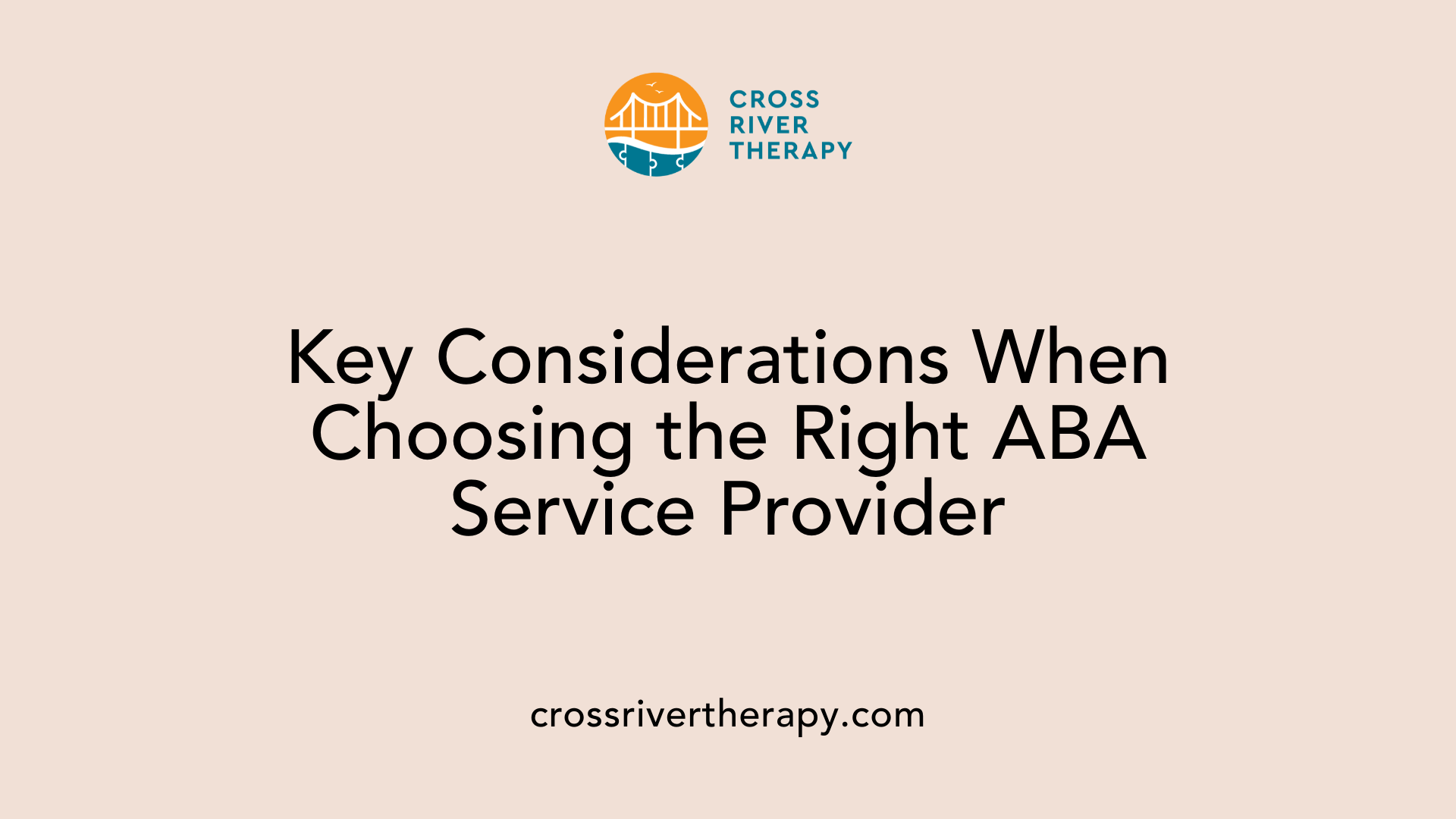
Criteria for Choosing a Therapist
When selecting an Applied Behavior Analysis (ABA) service provider, several factors should be considered. First, check their qualifications—therapists should ideally be Board Certified Behavior Analysts (BCBA). They must have the necessary training and experience in implementing ABA strategies effectively.
Next, look for references or reviews from other families. This feedback can provide insights into the therapist's effectiveness and compatibility with your child's needs. It might also be worthwhile to explore programs offered, ensuring they adhere to evidence-based practices as recommended by organizations like the US Surgeon General.
Importance of Individualized Treatment
ABA therapy is not a one-size-fits-all approach. Selecting a provider that offers personalized treatment plans is fundamental. These plans should begin with a thorough assessment of your child’s individual needs, preferences, and goals. A quality ABA program will focus not only on decreasing harmful behaviors but also on enhancing beneficial skills such as communication and social interaction.
Exploring Parent and Therapist Collaboration
The collaboration between parents and therapists is essential for successful ABA therapy implementation. Open communication ensures that both parties are aligned on treatment goals and progress. Regular meetings can facilitate updates on developments and adjust strategies when needed, enhancing the overall effectiveness of the therapy.
By evaluating these areas, families can confidently choose an appropriate ABA provider that meets their unique requirements.
Parent Training and Support in ABA
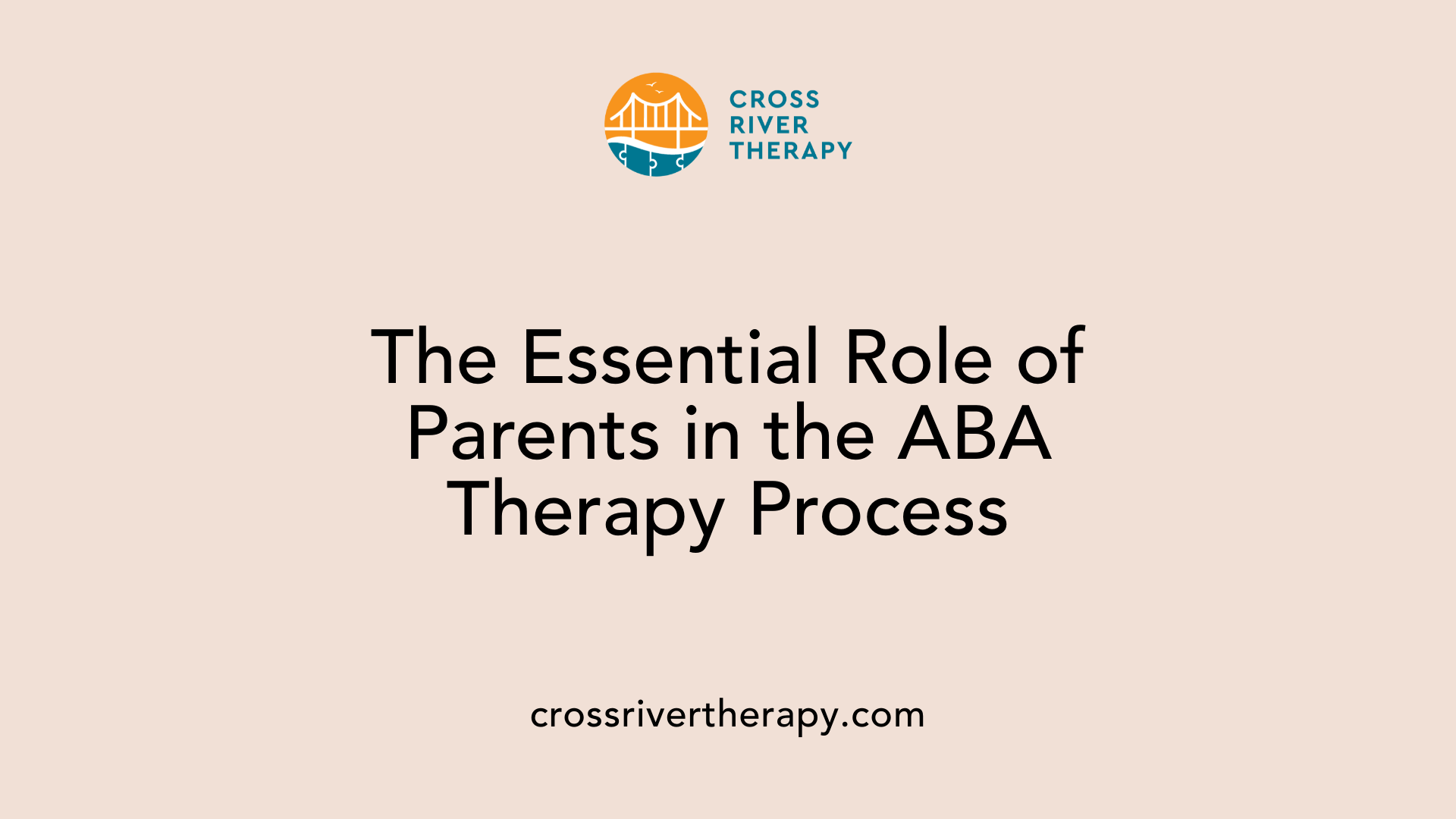
Parental involvement in ABA
Parental involvement is crucial in the context of Applied Behavior Analysis (ABA). Parents serve as primary caregivers and play a significant role in the child’s learning environment. Their active participation fosters consistency in the behavioral strategies employed during therapy sessions and at home.
Benefits of parent training
Parent training in ABA brings several advantages. Firstly, it empowers parents with skills and strategies to reinforce positive behaviors outside of therapy. This continuity enhances the effectiveness of ABA and encourages generalization of learned behaviors. Additionally, parent training provides valuable insights into child development, allowing for better decision-making and support.
Resources for families
Families can access multiple resources to support their ABA journey. Organizations such as the Autism Society and the Association for Behavior Analysis International offer training programs, workshops, and support groups. Online forums and webinars can also provide helpful information.
| Resource Type | Description | Where to Access |
|---|---|---|
| Training Programs | Courses on ABA techniques | Autism Society Website |
| Support Groups | Connect with other families for support | Local community centers |
| Online Webinars | Educational sessions on ABA practices | Association for Behavior Analysis |
| Articles & Blogs | Informative posts about ABA and parenting | Various parenting blogs |
By leveraging these resources, parents can better support their children in developing essential skills with ABA.
A Successful ABA Journey: Testimonials and Case Studies
Personal Stories from Families
Families have shared powerful testimonies about the positive impacts of Applied Behavior Analysis (ABA) therapy on their children's development. Many parents report significant changes in their child's behavior, such as improved social interaction, better language skills, and enhanced academic performance. For instance, one mother described how her son transitioned from being withdrawn and nonverbal to actively engaging with peers and expressing himself through language, thanks to personalized ABA interventions.
Success Outcomes of ABA
The success of ABA therapy is backed by numerous documented outcomes. Children with autism and related developmental disorders often show marked improvements in various skill areas, including:
- Communication Skills: Many children learn to express their needs and engage in conversations.
- Social Skills: Improvement in making friends and participating in group activities.
- Academic Performance: Enhanced focus and achievement in school subjects.
These outcomes are usually achieved through individualized treatment plans that are tailored to each child's unique needs and strengths.
Lessons Learned from ABA Experiences
Families have also learned valuable lessons during their ABA journey. Consistency and patience are vital components, as progress may take time. Many emphasize the importance of collaboration with behavior analysts to adapt strategies that fit their child’s evolving needs. Additionally, integrating lessons from ABA into everyday life has proven beneficial in reinforcing learned behaviors outside the therapy environment.
Overall, the numerous success stories and lessons from families reflect ABA's resilience and adaptability, inspiring hope and optimism for future experiences.
Conclusion: Making Informed Choices
As parents and guardians navigate the landscape of autism treatment, finding the right ABA therapy can be transformative. By understanding the methodologies, benefits, and intricacies of ABA, and seeking service providers that align with their values and needs, families can embark on a path toward improved quality of life for their children. Informed decisions, grounded in thorough research and open dialogue with therapists, pave the way for successful therapeutic outcomes.
References
- Applied Behavior Analysis (ABA) | Autism Speaks
- Treatment and Intervention for Autism Spectrum Disorder - CDC
- Autism Spectrum Disorder (ASD) - CDC
- Accessing Services for Autism Spectrum Disorder - CDC
- About Autism Spectrum Disorder - CDC
- Treatment Options - Autism Science Foundation
- Is ABA Therapy Only for Autism? - Applied Behavior Analysis Degrees
- Debunking 7 Common Myths About ABA Therapy - GSEP Blog
- Do You Need an Autism Diagnosis to Qualify for ABA Therapy?



